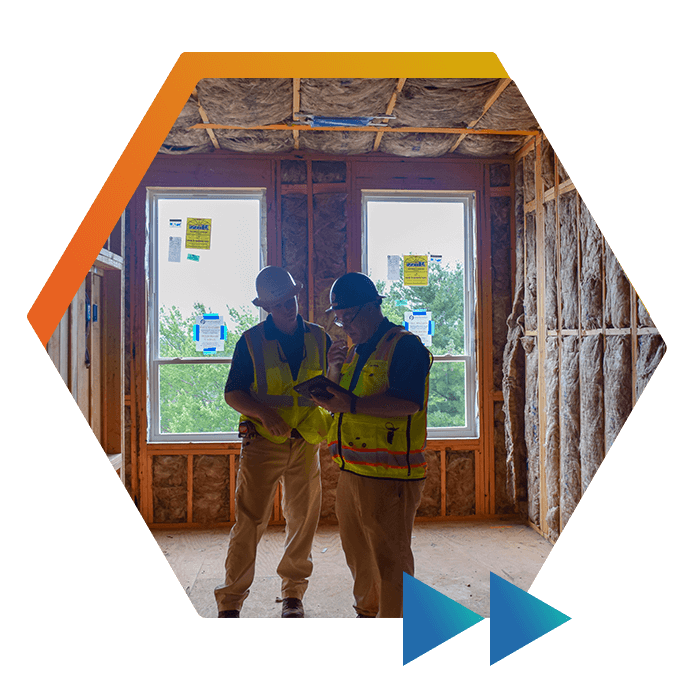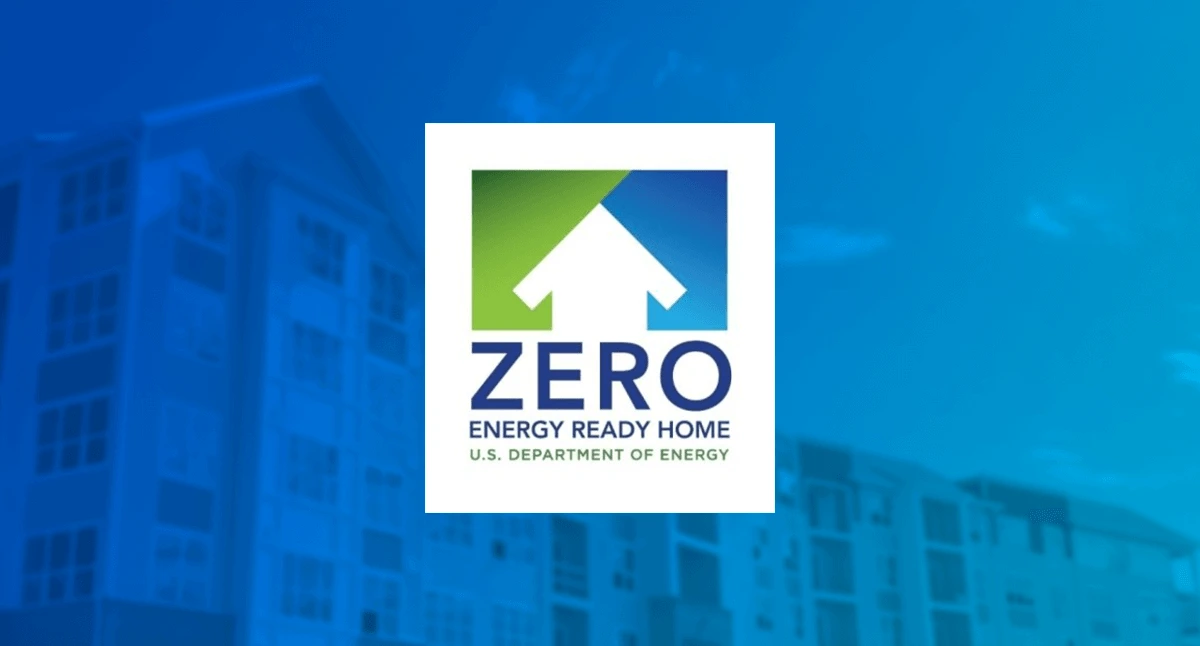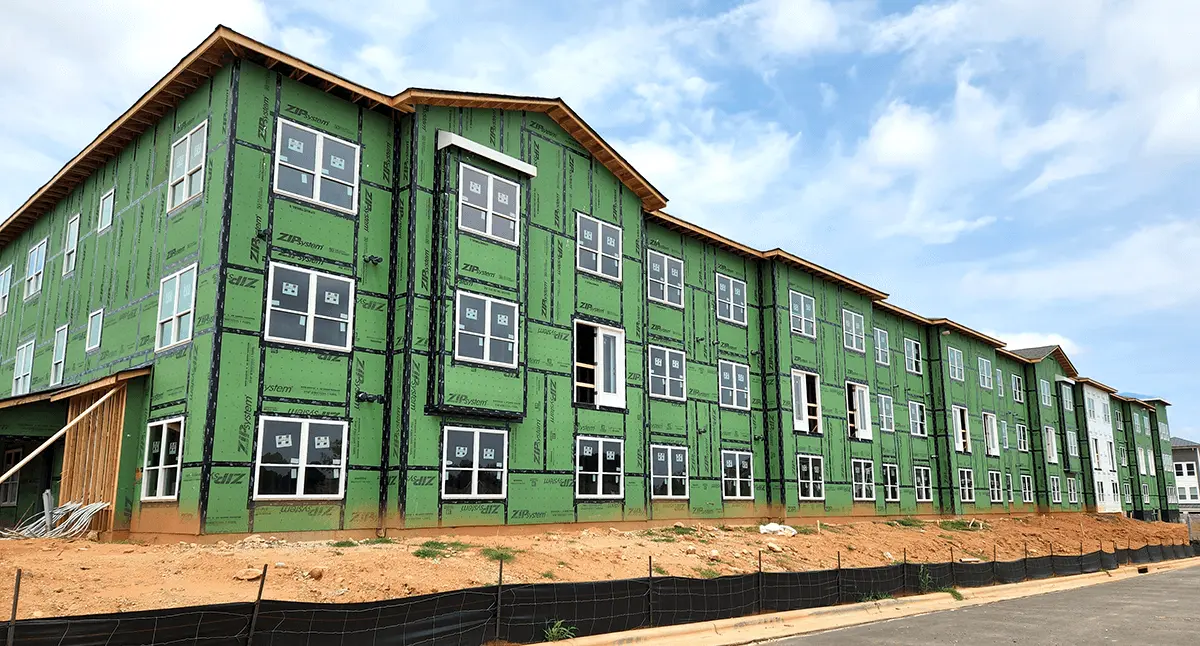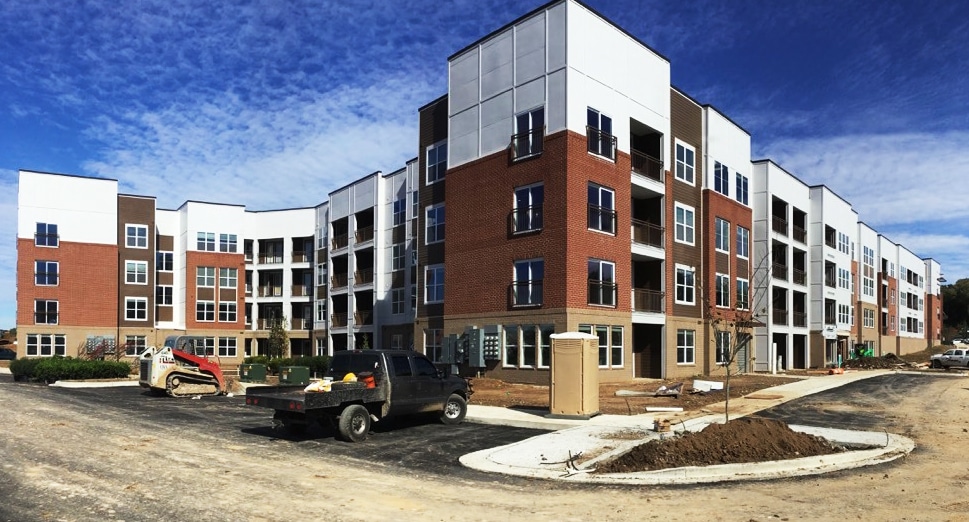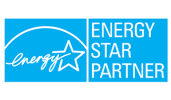Types of Multifamily & Commercial Incentives
Often there are local, state, or federal incentives in place to encourage developers to build or renovate high-performance green buildings. These can come in the form of utility rate reductions, utility incentives, tax credits, financing, or mortgage insurance rates. To make sure you’re getting the most value out of your project, our team is happy to help figure out what green construction incentives you are eligible for. Here are the four incentive categories we focus on:
* We are not tax professionals (surprise!) and this post does not constitute professional tax advice or guidance. This material has been prepared for informational purposes only, and should not be relied on for, tax, legal, or accounting advice.
Green Lending / Financing Incentives
Green multifamily loans provide monetary incentives and discounts on interest rates for developers (borrowers) to build high-performing buildings that use significantly less energy than a code-built structure would. Anyone who is applying for a residential multifamily loan is eligible for a Green Multifamily Loan.
Different lenders offer a variety of financial incentives based on Green Building Certifications and smart property improvements. Here are a few common options:
Fannie Mae Green Financing
Whether you have a property that is planning to or has achieved a green building certification, or a property you simply wish to improve the energy efficiency of, you have options. Fannie Mae offers two primary paths to green or preferred financing, that really can encompass any project.
Green Rewards
- Upgrading equipment
- Installing solar PV or other energy-generating systems
- Lighting upgrades
- Water saving measures
- Free energy audit available
- Learn More →
Green Building Certification Preferential Pricing
- Green Building Certification
- Certification must be current and from a recognized Green Building Entity
- Can be achieved before, during, or after construction, depending on the program
- Southern Energy can help place you in the right program and see you to the end
- Learn More →
Freddie Mac Green Financing
Freddie Mac offers similar multifamily green lending options through their Green Up®, Green Up Plus®, and Green Certified programs.
- Green Up®: Follow the Green Assessment and save 30% in energy OR water
- Green Up Plus®: Similar to Green Up, but more underwriting ability
- Green Retrofits: For affordable properties that make energy improvements, or have made improvements within the last two years
- Green Certified: Have a green building certification from a recognized Green Building Entity
- Green Rebate: Get an ENERGY STAR Score conducted for the property; there is no minimum and data can be reported at time of loan closing
- C-PACE: Commercial properties can go through this program
PACE Financing
The property-assessed clean energy (PACE) model, allows private property owners to realize financing savings for renewable energy systems. While only 3 States have residential programs, there are 37 states that have commercial programs.
- Unique financing that is attached to the property and not the property owner. This means that the loan will be the responsibility of whoever owns the property – including the lender if there is a foreclosure.
- Used for financing larger, non-portable energy up-fit items.
- Some property owners can deduct payments from their income tax liability
HUD MIP
This is an interest rate reduction program that offers substantial savings via large basis point reductions on residential loans. There are three primary requirements to be able to participate in this program. No geographic limitations for US properties.
- Conduct a whole property energy model/assessment and benchmark your property with the EPA Energy Star score.
- Achieve a design SEDI score of 75 or higher
- Commit to hiring a third party (like Southern Energy), to lead you through the process of selecting and certifying to a green building program
- After occupancy, report actual energy use of the entire property into the EPA benchmarking tool and report to your HUD lender. Maintain a score of 75 each year for the life of the loan.
Federal Tax Credits
There are several Federal Tax Incentives available to multifamily projects with many having been extended/expanded through the signing of the Inflation Reduction Act (IRA) in 2022.
45L Tax Credit
The 45L Tax Credit is a Federal Tax Credit available to new construction multifamily and single-family projects that meet energy-efficiency building standards.
- ENERGY STAR Multifamily New Construction (MFNC): $500/unit
- ENERGY STAR MFNC + DOE Zero Energy Ready: $1,000/unit
- ENERGY STAR MFNC + Prevailing Wage: $2,500/unit
- ENERGY STAR MFNC + DOE Zero Energy Ready: $5,000/unit
Section 179D Deductions * Commercial
This incentive provides a deduction to help make multifamily and commercial buildings more energy efficient.
- The incentive amount depends on the efficiency of the building — the more efficient, the greater the incentive
- There are additional incentives for prevailing wages
- Incentives range from 50 cents per ft² (for 25% efficiency gain over baseline) up to $5.00 per ft² (for 50% efficiency gain over baseline + prevailing wages)
- There is also a retrofit option for buildings 5 years and older
30% Federal Investment Tax Credit for Solar
The signing of the Inflation Reduction Act recently extended the 30% Federal Investment Tax Credit (ITC) for solar. The Solar Investment Tax Credit (ITC) is a tax credit (a dollar-for-dollar reduction of your federal tax liability) that you can claim for installing a solar and/or battery system on your property.
- Formally known as Section 48 of the Investment Tax Credit
- 30% Tax Credit for installing a solar and/or battery system, worth 30% of system costs
- Available to homes and businesses that pay taxes
- New! 30% Direct Pay option for nonprofits and government organizations
- There are additional incentives for meeting “domestic content requirements” and developing in an “energy community”, more guidance to come
State / Municipal Incentives
Some states or municipalities require sustainable development and/or green building certification(s) for new-builds. In order to offset the initial investment of building green, many locations have created energy efficiency specific incentives.
* This is not an exhaustive list of local green building incentives, but rather a few examples from large markets where our clients have found success. If your local municipality requires a green building program, reach out and we’ll help you figure out what incentives you can tap into!
DC/Arlington Area Incentives
DC currently has a strict green building code, with plans to require net zero construction by 2026. However, several incentives are readily available for builders and can be found listed on the DC DOEE webpage.
Rebates
Available for a wide range of efficient technologies including but not limited to:
- Lighting
- Boilers
- Furnaces
- Refrigeration
Incentives
Available for several categories such as:
- Energy efficiency
- Transit
- Sustainable business practices
- Riversmart properties
Colorado Incentives
Denver requires its new buildings to achieve LEED Gold, NGBS Gold, or another approved green building standard. The state isn’t far behind, with new bills on Building Greenhouse Gas Emissions being discussed in the Colorado General Assembly. To help builders & developers understand their options, the Colorado Energy Office has a list of energy efficiency resources which include:
- Tax incentives
- EZ Investment Tax Credit
- Property Tax Exemption for Renewable Energy Systems
- Sales Tax Exemption for Renewable Energy Systems
- And more!
- Rebate/performance-based incentives
- Internal Funding
- State Programs
Florida Incentives
Several cities across Florida, such as Orlando & St. Petersburg, require LEED standards to be met on some or all new construction. Other cities, though not yet required, are promoting green standards (such as Fort Lauderdale & Sarasota). Other incentives vary by city and range from product & technology rebates (like ENERGY STAR-certified appliances) to expedited review incentives, reduced building permit fees, and solar incentives. Here are a few examples of various programs:
- Energy Efficient Product Incentives (ENERGY STAR Certified Appliances)
- GreenBuilt Home Rebate (Jacksonville)
- Low-Income Residential Energy Efficient Grant Program
- Renewable Energy Tax Incentives
- Rural Community Energy Efficiency Grant Program
- REET Grant Matching Program
Learn More:
Utility Incentives
Due to the increasing demand for grid power, and the ever-increasing costs of energy generation, many power providers and utility companies are offering major incentives to those that build more efficient structures and install high performance equipment.
The term ‘Utility Incentives’ can have a variety of different meanings. Many of these incentives are more lucrative and attainable than they would appear at first glance. This is where Southern Energy Management steps in: we review your plans, talk about your goals, and asses the best route for your project to realize large savings.
* This is not an exhaustive list of incentives, but a few examples of utility programs we commonly work with. If your project is with a different utility, let us know and we’d be happy to review what efficiency or high-performance incentives they may offer.
Duke Energy: HERO Code
HERO Code — or High-Efficiency Residential Option — is a voluntary section of the 2018 North Carolina Conservation Energy Code. This incentive is available to builders and developers who build energy-efficient single or multifamily residences that meet HERO Code targets in Duke Energy territory.
- Whole-home incentive: Up to $9,000
- Equipment incentive: Up to $750
- Three or fewer stories can qualify for Equipment Incentives or the Whole-Home Incentives (incentives cannot be combined)
- Four stories or more can only qualify for the Equipment Incentive
- Projects must be new construction or gut renovations served by Duke Energy Progress or Duke Energy Carolinas
Duke Energy: Design Assist
In an effort to reduce energy consumption from commercial properties, Duke Energy offers an energy reduction guidance and incentive program. This is for property owners building new properties that wish to explore how they can save energy on through design features, equipment, and whole property energy management systems.
- Free energy model and upgrade analysis from Duke Energy
- $ rebate based on estimated kWh savings
- Duke will offer multiple upgrade packages that allow your team to select the most appropriate option
- Projects must already be opted in, or have plans to opt in to the Energy Efficiency Rider
Rocky Mountain Power: Wattsmart
For any Rocky Mountain Power customers in Utah, Wyoming, or Idaho, there are numerous options for utility incentives and rebates for energy-related improvements. Many of these incentives are available for existing properties and new construction.
- Equipment rebates
- Energy model kWh savings calculations
- Building equipment and envelope incentives
FAQs
Have more questions? Our building performance team is happy to help!
Schedule a meeting →
Incentives are available for energy efficiency, transit, sustainable business practices, & riversmart properties. A full list can be found on the DC DOEE webpage.
Incentives are generally available for both residential and commercial buildings. However, some incentives, rebates, etc. may be tailored towards a certain type of building (i.e. single-family homes only). If you’re not finding incentives for your green property, reach out & we’ll gladly help.
- Qualifying for a tax credit or incentive depends heavily on your building’s design and which incentive you are pursuing. If you’re already building to green certification, you may not have additional costs to account for. If you’re not pursuing certification but need to in order to qualify for the incentive, note that there are fees associated with both certification and verification.
- In the case of utility incentives, the only soft cost incurred is hiring an energy consultant to see you through the application process. These costs are typically minimal compared to the costs realized from the incentives themselves.
Numerous things; from whole building certifications to onsite power generation, to a specific type of heat pump or water heater, to installing LED lights – the list is a long one.
- Faster ROIs
- Higher resale values
- Fewer maintenance costs
- Better tenant attraction and retention
- Read more about the benefits here!
Available incentives may include federal, state, municipal, and utility incentives for green/energy-efficient projects.
Not automatically. In order to receive tax breaks/incentives, you will need to apply for one of the many federal, state, or local incentives relating to your project. Remember, this may not always be a LEED-specific incentive, but rather an incentive based on the equipment installed to meet LEED’s parameters.
Resources
Building Certification Comparison Tool
Multifamily Green Building Starter Guide
We're Here to Help!
If you’re like many of our clients, you’ve already got a long list of to-dos. Our team is happy to help shorten your list. Let us know what you need help with and if you’ve got questions about what incentives are available to your next project. Schedule a meeting, or fill out the form below to get started.
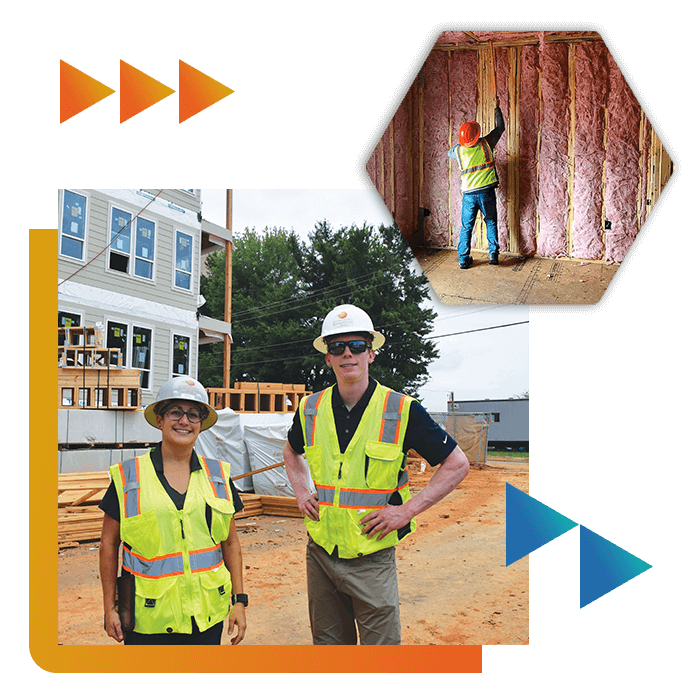
Ready to Get Started?
Schedule a meeting with our green building specialists to review your project goals and challenges.
About Us
North Carolina’s solar power and building performance expert. Founded in 2001, we’ve worked for 20+ years to improve the way people make and use energy.

